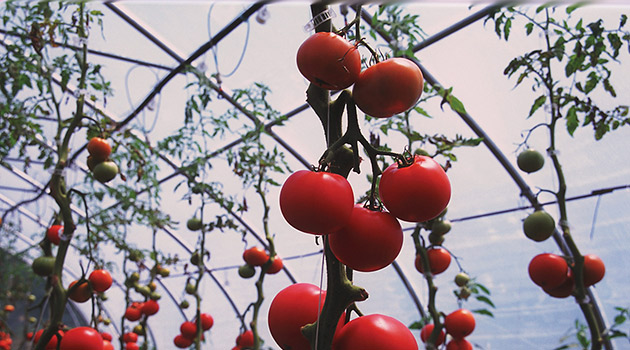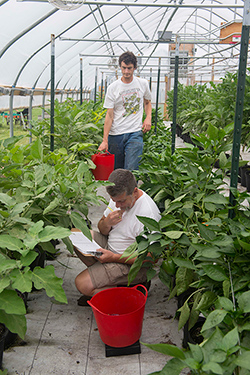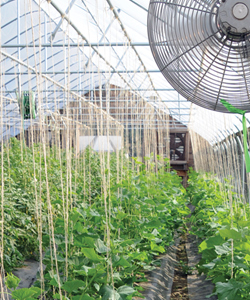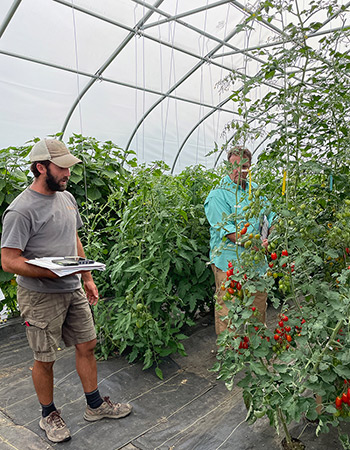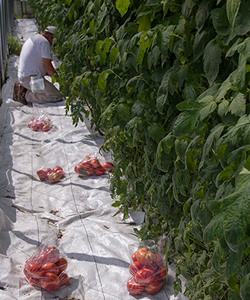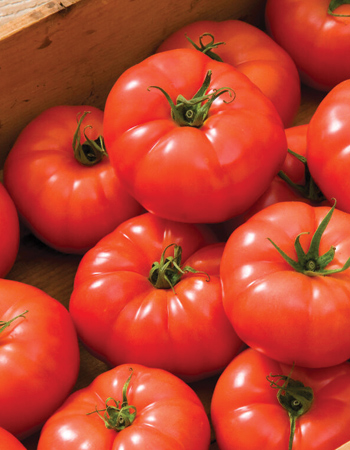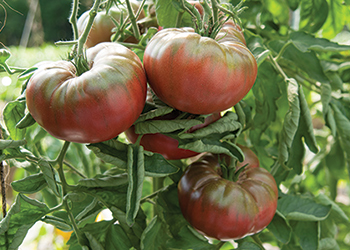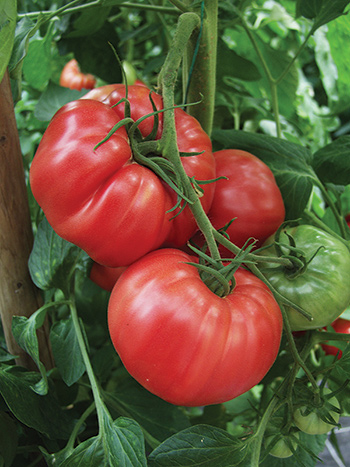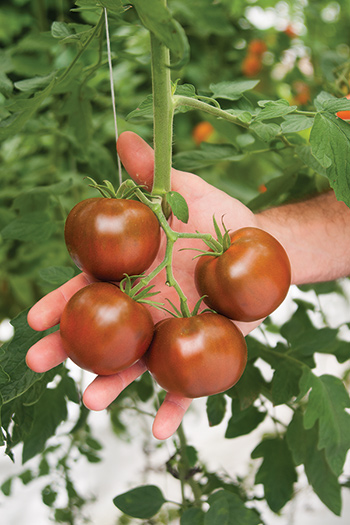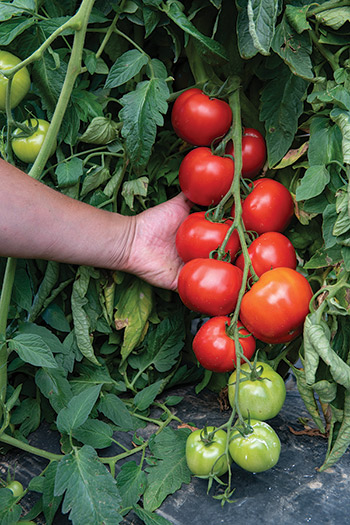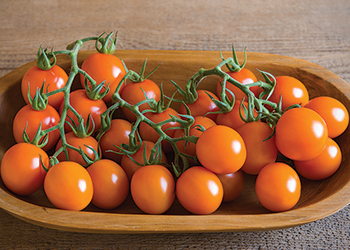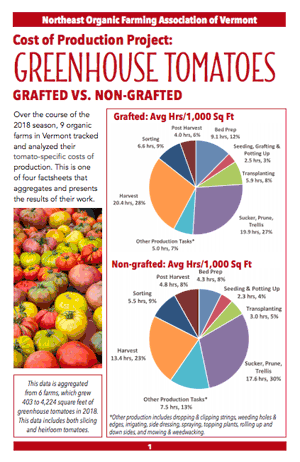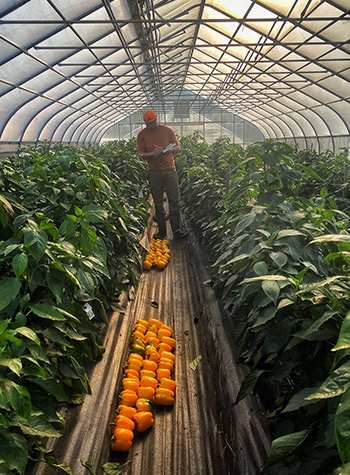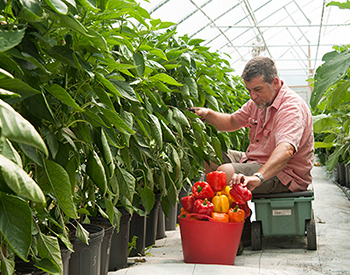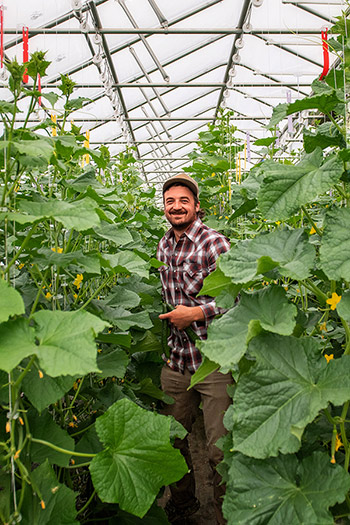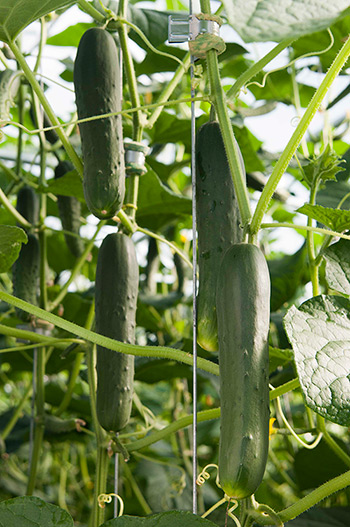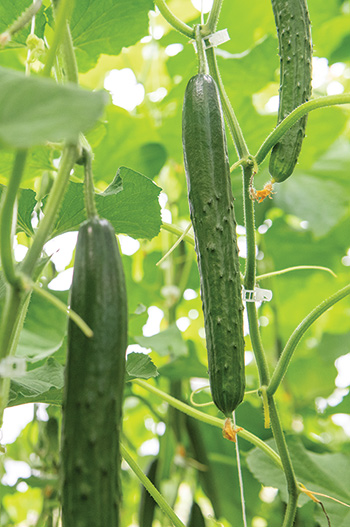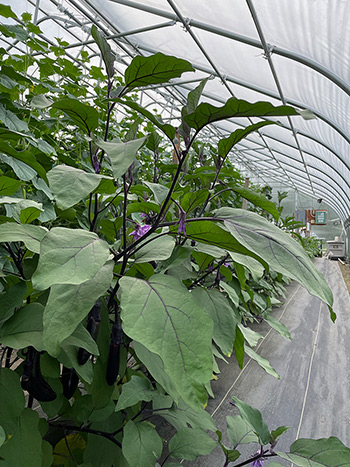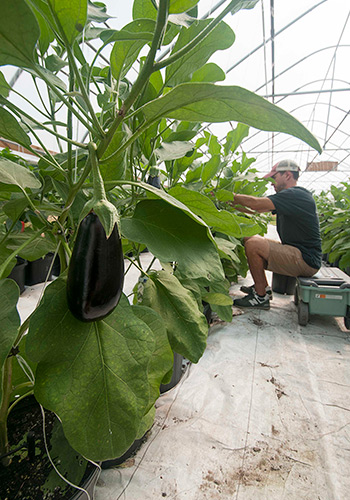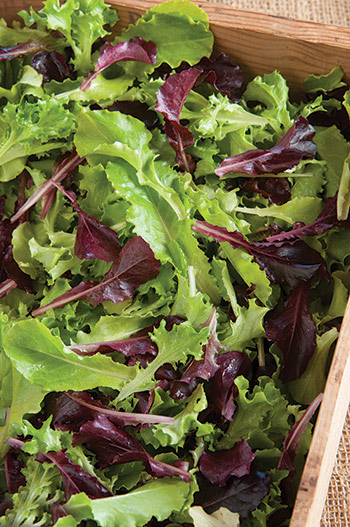- 10 Ways to Extend Your Season with Protected Cultivation
- QuickHoops Gothic High Tunnel Bender | Construction Manual for Modular Moveable Gothic High Tunnel (PDF)
- QuickHoops Gothic High Tunnel Bender | Construction Manual for Stationary Gothic High Tunnel (PDF)
- QuickHoops High Tunnel Bender | Construction Manual for Building a Stationary High Tunnel (PDF)
- QuickHoops Low Tunnel Benders | Instruction Manual (#9377 & #9520) | (PDF)
- Agribon+ AG-19, 30, 50 & 70 Row Cover | Insert (PDF)
- Hitch Mount for QuickHoops Low Tunnel Benders | Instruction Manual (PDF)
- Bobcat Automatic Ventilation Kit Manual (#6791) | Tech Sheet (PDF)
- Bobcat Pro High Tunnel Kit Manual (#6794) | Tech Sheet (PDF)
- Bobcat Pro High Tunnel Kit (#6794) | Parts List (PDF)
- Bobcat Sliding Door Kit Manual (#6792) | Tech Sheet (PDF)
- Bobcat Standard High Tunnel Kit Manual (#6795) | Tech Sheet (PDF)
- Bobcat Standard High Tunnel Kit (#6795) | Parts List (PDF)
- Bobcat Steel End Wall Kit Manual (#6793) | Tech Sheet (PDF)
- Truss Support Kit Manual (#6790) | Tech Sheet (PDF)
- Bobcat Tunnel Kits | Comparison Chart
- Beginning & Intermediate Controlled Environment Agriculture (CEA) | Advances in Greenhouse Crop Production
- 5 Cool Flowers to Plant Now | Lisa Mason Ziegler's Secrets for Growing Hardy, Cool-Season Annuals
- Hoop Loops | Installation Instructions | Tech Sheet (PDF)
- Introduction to Overwintering Flowers | Guide to Overwintering Flowers
- Overwintering Perennial Herbs
- Protect Your Crops | High & Low Tunnel Basics
- The Effect of Shorter Daylength on Winter Production
- Be First & Last to Market by Extending Your Growing Season
- Quick Hoops Low Tunnels | Set-up & Management with Eliot Coleman
- Constructing the Modular Moveable Gothic Tunnel – Animated Schematic
- Moving the Modular Moveable Gothic Tunnel – Slideshow
- Skinning the Modular Moveable Gothic High Tunnel – Slideshow
- Overwinter Flower Trials | Multiyear Results for 30+ Crops | Johnny's Selected Seeds | XLSX
- Seeding Date Calculator | Johnny's Recommended Flowers for Overwintering | XLSX
- Overwintering Onions from Seed | Johnny's Selected Seeds
- Overwintering Crops | Planting Chart for Earliest Spring Vegetable Harvest
- Pest & Disease Control Basics in Greenhouse, Hydroponic & Other Protected-Culture Systems
- Pests & Diseases of Greenhouses & Hydroponic Systems | Tech Sheet (PDF)
- Why & What to Grow in a Greenhouse? Basics of Protected Culture
- Recommended Varieties from Our Greenhouse Trials | What We Look for in Greenhouse Crops
- QuickHoops 3'W x 4.5'H Low Tunnel Bender (#7616) | Instruction Manual (PDF)
- Cable Purlin Trellis for QuickHoops High Tunnels | Installation Manual (PDF)
- QuickHoops Moveable High Tunnel Bender | Instruction Manual (PDF)
- QuickHoops Seedling & Microgreens Bench | Construction Guide (PDF)
- Row Cover & Insect Netting Options & Uses | Comparison Chart (PDF)
- Tufflite IV Greenhouse Film | Comparison Chart (PDF)
- Univent Automatic Opener for BiFold Doors | Instruction Manual (PDF)
- Video: Johnny's Season Extension & Overwintering Trials
- Video: Planning & Planting the Autumn Vegetable Garden | Tips & Recommendations with Niki Jabbour
- Video: Growing Under Cover with Niki Jabbour | Johnny's Webinar Series
- Video: Veggie Remix: Bring New Flavors & Colors Into Your Garden | Johnny's Webinar Series
- Video: Cover Cropping for Field & Garden with Collin Thompson | Johnny's Webinar Series
- Video: Tips & Crop Recommendations for the Autumn and Winter Cold Frame • Tutorial with Niki Jabbour
- Video: DIY Cold Frame • Easy How-to Tutorial with Niki Jabbour
- Video: How to Use Quick Hoops™ Benders to Create High & Low Tunnels
- Video: The Benefits of Row Covers | Recommendations & Tips
- Video: Hoop Houses & Other Ways to Extend Your Growing Season
- Video: Take a Tour with Us of Johnny's Greenhouses!
- Growing Under Cover with Niki Jabbour & Johnny's | Johnny's Educational Webinar Resources
- Johnny's Winter Growing Guide | Printable Brochure (PDF)
- Winter Production in the High Tunnel | Johnny's Winter Growing Guide
- Winter Growing Guide | Introduction & Part 1: Scheduling Your Winter-Harvest High Tunnel
- Winter Growing Guide | Protection Methods for Overwintering in Low Tunnels
- Winter Growing Guide | Scheduling Guidelines for Overwintered Crops
- Winter Growing | Recommended Crops & Varieties
- Planting Dates for a Winter Harvest | Johnny's Winter Growing Guide
- Webinar Slide Deck | Overwintering Flowers | 41-pp PDF
- Gardening in a Cold Frame With Niki Jabbour
- Video: Irrigation Considerations for the Overwinter Flowers Tunnel | Johnny's Selected Seeds
- Choosing Flower Crops to Overwinter | Guide to Overwintering Flowers
- When to Start Seeds for Overwintered Flowers | Guide to Overwintering Flowers
- Video: Winter Sowing & Milk-Jug Greenhouses | With Niki Jabbour & Johnny's
Trial Criteria for Johnny's GREENHOUSE PERFORMERS
How to Select Varieties for Greenhouse Growing
What Makes a Variety Right for the Greenhouse?
Greenhouses and poly tunnels of every scale, design, and technological level are cropping up everywhere, as growers around the globe discover the advantages of protected culture. Of the innumerable benefits of greenhouse culture, at the top of many growers' lists are season extension, better yield and quality, and protection from adverse weather and pathogens such as early and late blight.
Growing within a protected environment does carry its own set of challenges, however, including space limitations, pinpointing the right variety/nutrient/light/irrigation recipe, more intensive plant maintenance, and increased risk of diseases specific to greenhouse conditions, such as leaf mold. Crops need to perform particularly well to deserve placement in the valuable real estate of a greenhouse or hoophouse.
The research team at Johnny's Selected Seeds is committed to breeding, trialing, and selecting crops well-suited to the greenhouse environment. Over the years we've honed our process for identifying top performers, learning how to distinguish them from varieties better off grown in the field. Here are some findings from our team, including specifics on what to look for, along with some recommendations for varieties we think will perform well in your greenhouses.
Above & Beyond Flavor — What We Look For
Our research team conducts variety trials at our research farm in Albion, Maine, and in cooperation with growers and university researchers across the globe.
In one recent trialing cycle, Johnny's staff trialed 107 varieties of tomatoes in high tunnels at our research farm, plus 21 different tomato rootstocks. In the same year we trialed 54 different varieties of greenhouse pepper, 47 varieties of greenhouse cucumber, and 20 varieties of greenhouse eggplant.
Trialing involves evaluation of a specific set of criteria, including appearance, size, shape, flavor, plant habit, yield, and plant health, as well as any additional observations of note.
In addition, we collaborate with commercial growers who have a market for the crops, and work with them to trial new varieties. In this way we gather feedback on both production and marketing from multiple locations internationally.
Just what are we looking for when we trial varieties in protected culture? Above all, we want varieties that taste good. With that as the starting point, we look to identify a variety as a good choice for protected culture if it excels in one or more of the following qualities:
- Flavor — Always tops our list.
- Vigor — To keep growing longer than the season would require for field production.
- Plant habit — The space limitations of indoor growing favor more compact plants, requiring less pruning and maintenance.
- Disease resistance — The reduced airflow and higher humidity of a greenhouse or high tunnel promote specific foliar diseases, and insects like whiteflies can transmit viruses quickly from plant to plant.
- Higher yield — To justify the investment in a structure.
- Ability to do well under low-light conditions — Examples include red lettuce that develops its full pigmentation potential or sunflowers that are daylight-neutral. Or, we may look to see whether a variety escapes disease or physiological symptoms characteristically heightened for the crop when light transmission is restricted by glazing material.
- Ability to set fruit without pollination — A greenhouse enclosure limits flowering crops' access to pollinators such as bees and butterflies. This can be especially critical for cucumbers grown indoors, which is why parthenocarpic varieties are often recommended for indoor culture.
Our Greenhouse Symbol
At Johnny's we breed, trial, and select for the best genetics possible, to offer greenhouse growers the most consistently reliable varieties to grow under conditions specific to greenhouse culture. Once a variety has proven itself in Johnny's trials, it is designated by a greenhouse symbol. You can be confident that when you see the little Greenhouse Performer symbol next to a variety in our catalog or on our website, it has been carefully trialed and identified as deserving a place within the limited footprint of your greenhouse environment.
The result of our commitment to providing superior protected-culture offerings is a selection of vegetable, herb, flower, and fruit varieties that help you make the most of that valuable undercover, greenhouse, or hoophouse real estate. In this next section, our research team shares some of our greenhouse vegetable trial findings, recommendations, and favorites.
Johnny's Greenhouse Performers: 5 Recommended Crops
1 • TOMATOES FOR GREENHOUSE PRODUCTION
Tomatoes are among the most popular crops for high tunnel and greenhouse production for many reasons: For one, they will produce earlier and later in the season than field crops. Second, quality is generally much better than field-grown because they are protected from weather-related damage (such as splitting, or diluted flavor from heavy rain), which results in higher marketable yields. Additionally, protected culture provides some protection from diseases caused by wet foliage, such as early and late blight. Most importantly, tomatoes are a high-value crop in many markets, and they can produce a steady crop over a long period. A single planting can thus provide a high return on investment with a little regular maintenance.
That said, the high-temperature, high-humidity greenhouse environment is conducive to a different set of diseases, including leaf mold, powdery mildew, fusarium crown and root rot, corky root rot, and botrytis. These fungal diseases are able to spread very rapidly in the close quarters of indoor tomatoes. Soilborne pathogens can build up large populations if tomatoes are grown regularly in the same hoophouse ground; often the high value of tomatoes entices producers to grow them more frequently than they should, without rotating to less valuable crops to break disease cycles. Additionally, symptoms of the tobamoviruses (tobacco mosaic virus and tomato mosaic virus, or TMV and ToMV, respectively) are exacerbated by the restricted light transmission found in greenhouses and high tunnels.
In evaluating dozens of tomato varieties each year for greenhouse culture, Johnny's looks first for four principal sets of qualities:
- Exceptional vigor and higher yield over a longer season at hotter temperatures than those in the field.
- Resistance to the diseases mentioned above, which are less commonly seen in field production.
- More compact, "polite" plant habits, which reduce the need for pruning and allow better airflow amongst the plants.
- The best flavor and texture possible.
Recommendations for Heated Greenhouse Production
Go-To Varieties. We carry two "go-to" varieties of big, round red tomatoes that are highly productive, feature balanced plant habits, and still deliver good tomato flavor: 'Geronimo' is a long-time standard, producing reliably hefty yields of 8–10 ounce, classic red slicers. 'Bigdena' is a more recent introduction, featuring slightly larger fruits than 'Geronimo,' with a taller fruit profile that affords the chef an extra slice or two. Both feature comprehensive disease packages and perform well in both the heated greenhouse and high tunnel.
Best All-Round Performer. The tomato variety that earns our highest rating for heated greenhouse production is 'Rebelski', as it's known in Europe — aka 'DRW 7749'. 'Rebelski' has shiny, bright-red, slightly ribbed fruits that are firm without being hard, averaging 7–8 ounces in weight. It has excellent resistance to powdery mildew and leaf mold, which keeps the crop healthy over a long season. And, it has good flavor!
Hy-looms. For those who favor classic heirloom appearance and flavor, Johnny's recent greenhouse tomato introductions include 'Margold', 'Marnero', 'Marbonne', 'Marnouar', 'Cauralina', and 'Marvori,' which together make up our French Heritage Collection. They look and taste very much like their heirloom counterparts — but with improved resistance to disease pressure and higher yield potential. A few details on the first three varieties:
- 'Margold' preserves the look and flavor of the red-streaked yellow heirlooms, while adding leaf mold resistance, improving fruit uniformity, and improving marketable yield. Its very soft flesh has sweet and mild tomato flavor and thick, juicy texture, with an appearance similar to 'Striped German.' It's a great BLT or burger-topping tomato.
- 'Marnero' keeps the best attributes of the black tomatoes, while again, improving upon disease resistance and yield. A dead ringer for 'Cherokee Purple,' its flesh is also very soft, with the complex flavor and meaty texture you would expect from your favorite "black tomato" heirlooms. 'Marnero' stands out in Caprese salad, fresh pico de gallo, or any other preparation where raw tomato is the focus of the dish.
- 'Marbonne' represents the classic French 'Marmande' heirloom type, with rich scarlet skin and a crown accented by deep ribs. Because this type is so popular throughout Europe, there are actually several hybrids on the global market that resemble the original 'Marmande,' but we have found 'Marbonne' to be the best of the lot. It is very early maturing (as are most 'Marmande'-types), and is the highest yielding of the French Heritage tomatoes. It is also arguably the sweetest and most universally appealing in flavor. There is no wrong way to prepare 'Marbonne'!
The benefit the French Heritage tomatoes confer to the grower is in producing fruit with eating quality equivalent to heirlooms' but on higher-yielding plants, due to better vigor and disease resistances, allowing the plants to live longer and stay healthier. By way of comparison, many greenhouse growers report heirloom yields of one-third to one-half of what they get off red greenhouse beefsteaks — a potentially money-losing proposition. With the French Heritage varieties, we hope to help growers profit from their best-tasting tomatoes.
Another one of the best hylooms or heirloom "imitators" is 'Pink Wonder'. It resembles the beefy pink heirlooms like 'Rose' and 'Pruden's Purple,' with smooth texture and flavor similar to those heirlooms — qualities that are uncommon in many modern hybrids.
'Kakao' is another recent addition to our line of greenhouse tomatoes, with a distinctive appearance and a flavor all its own. 'Kakao' has the black tomato look in a smaller package, with uniform, round fruits between 4½–5½ ounces. Its iconic dark looks, soft flesh, and savory flavor — almost as though it had been sea-salted — lend it instant recognition for standout branding.
Recommendations for Unheated Greenhouse or High Tunnel Production
For unheated greenhouse growing, we suggest the tomato varieties detailed below. For more information on unheated protected culture tomato production and relevant disease concerns, see our Top-12 Recommended Tomato Varieties for Hoophouse and High Tunnel Production, as there is overlap in the varieties as well as the conditions of protected-culture in these various structures.
The tomato varieties mentioned in the section above will also do very well in unheated greenhouses and high tunnels, but some growers find the seed cost to be prohibitive. For more "low-tech" indoor production, we often look to places like Italy and Spain for sourcing varieties. In these regions, tomatoes are grown in soil, under very large structures. The climate is hot and dry, so they don't experience leaf mold very often. They breed primarily for resistance to soilborne diseases and viruses, as well as manageable plant habits. Resistance to verticillium, fusarium, nematodes, and TMV are so ubiquitous in these types that the term VFNT is used in the industry to describe this suite of traits. The markets these breeders serve are very fickle about fruit quality, so the flavor tends to be better in these types than in those bred for high-tech culture. (Learn more about Tomato Pests, Diseases & Physiological Disorders…)
'BHN 589' — A semi-determinate slicer with great all-around performance and a low-maintenance plant, 'BHN 589' is the variety we recommend trying first if you are getting into determinate tomato production under cover.
'Estiva' — 'Estiva' has been a fixture in Johnny's catalog for a long, long time. We simply haven't found anything else with its combination of production and quality. Bred for low-tech indoor production in southern France, 'Estiva' cranks out loaded clusters of remarkably uniform fruit in the versatile 6–7-ounce size range. The color is deep red and the flavor and texture are outstanding. 'Estiva' is very vigorous, but the plant habit is well balanced and thus highly suitable for unheated greenhouses. Resistance to soilborne pathogens and TMV are a nice added bonus.
'Clementine' —From Johnny's classical breeding program, 'Clementine' is a unique orange cocktail tomato that matches well with the popular 'Mountain Magic', both offered in certified-organic seed. 'Clementine' features short leaves and a polite, open habit that fit well in close quarters and ventilate well.
'Sunpeach'— A very tasty pink cherry tomato from Japan, 'Sunpeach' has leaf mold resistance and easy-access clusters hung on a well-behaved vine. Its unique color is perfect for mixed quarts.
'Favorita' — Like 'Sunpeach,' 'Favorita' is a small-fruited specialty that features leaf mold resistance and exceptional flavor. 'Favorita' also has resistance to Fusarium, nematodes, and TMV, and an indeterminate plant.
'Granadero' — A broad disease package, compact plant, and huge yields of blemish-free fruits make 'Granadero' an excellent choice for Roma tomatoes in just about any growing system, including unheated greenhouses and high tunnels. 'Granadero' was selected specifically for performing in organic systems, so you know it's a tough customer. It features the VFNT disease package, with added resistance to powdery mildew, a problem increasingly seen in protected-culture tomatoes.
Grafting Tomatoes and Cucumbers for Greenhouse Production
Grafting is a cultural technique widely used in intensive cropping systems such as high tunnel and greenhouse production. Grafting involves sowing two sets of seedlings: the scion, or top variety, selected for its fruit qualities, and the rootstock variety, selected for vigor and disease resistance. When the seedling stems of each set reach approximately the same diameter and their first true leaves emerge, the stems are cut and the scion tops are attached to the rootstock bottoms with clip to hold them together. The tissues of the scion and rootstock grow together and heal over, leaving a grafted plant.
While the primary advantage of grafting is decreased problems with infectious disease, the technique also provides for better vigor, longevity, size, yield, and, importantly, flavor and overall eating quality.
If you can make the initial investment of time and space, grafting your own tomato or cucumber plants can provide a very cost-effective solution. To support grafting, Johnny's offers several rootstock tomato varieties, a rootstock squash variety for cucumber grafting, and grafting tools, and for comprehensive educational materials for this modality, see our Tomato Grafting Webinar Resources and Cucumber Grafting Webinar Resources.
2 • Peppers for Greenhouse Production
All peppers will benefit from indoor growing, especially if they are being grown to the fully ripened color stage. Any of our peppers are suitable for low-tech tunnel growing, in that they will produce higher-quality fruit than when grown in open field conditions.
While all types of peppers benefit from indoor growing, bell peppers are one of the most widely grown greenhouse crops. Because field production of bell peppers can be a challenge and returns on premium-quality bells can be good, they are a natural fit in many growers' greenhouses.
We offer a group of bell peppers bred specifically for protected culture. The traits we look for in a good greenhouse pepper include:
- Good fruit-setting under high and low temperatures — some pepper varieties drop blossoms in temperature extremes.
- Early-maturing varieties with attractive ripe coloration.
- Big, blocky peppers with good flavor and excellent fruit quality to ensure a premium price at market.
- High level of vigor to keep the plant growing and the yields high over a long season.
Recommended Peppers
Peppers are far less able to overcome suboptimal temperatures than a more vigorous crop like tomatoes can. For this reason, we recommend temperature control for best results. In other words, some greenhouse heating may be required to prevent cold stress in a pepper crop. Likewise, temperatures of approximately 95°F (35°C) and above can cause sterilization of pepper pollen, so we recommend growers ensure adequate venting as well, to prevent ambient temperature from reachingthis high.
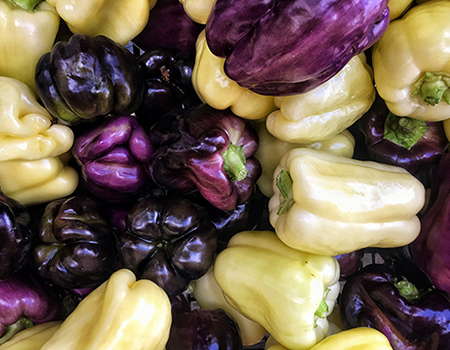
For growers interested in maximizing their return, there are varieties bred specifically for low-tech tunnel systems. These varieties typically produce more compact, vegetative plants compared to those varieties bred for high-tech greenhouses, but they are still generally taller, with longer internodes than standard field varieties. Varieties that are more vegetative put more energy into the plant, a feature which helps them withstand adversity. These include the pretty bell varieties 'Sprinter' (red), 'Milena' (orange), and 'Brocanto' (yellow), a trio which also does well in both heated and unheated tunnels. For growers looking for a splash of color as early as possible in the season, 'Lilo' (purple) and 'Snowball' (white) are also strong greenhouse performers.
While these varieties will perform well when trellised using simple basket-weave methods, additional labor efforts applied to pruning and trellising will maximize the return overall in marketable yields. For more details, see our technical instructions for Greenhouse Bell Pepper Production.
3 • Cucumbers for Greenhouse Production
Cucumbers are another top crop for protected culture, providing a respectable return on the investment required. The desirable attributes we seek in greenhouse and high tunnel cucumbers include:
- Exceptional vigor to grow over a long season.
- Good resistance to common diseases of protected environments.
- Overall high yields to justify the use of the structure.
- Exceptional eating quality with less bitterness, no seeds, and thinner skins, a combination not easily achieved in field production.
- Parthenocarpic and gynoecious reproductive habits to ensure high yields and good pollination in an enclosed growing environment.
- Plants have been bred specifically to produce fruit on the main vine, allowing for trellising and pruning systems to be used.
Recommended Cucumbers
Our favorite greenhouse cucumber is 'Corinto,' probably the most vigorous cuke we have ever seen. (It may outgrow everything else in the greenhouse.) It offers good disease resistance and high yield potential. It is also well adapted to stressful conditions, which can plague high tunnel growers in the cool shoulder seasons and in the peak heat of summer. Combine these features with its flavor and familiar slicer appearance, and you have a winner for protected culture.
'Corinto' is so productive you will need to prune fruit to one per node, to prevent the plants from becoming overloaded. To learn how, watch our Cucumber Pruning Tutorial Video. For additional details, refer to our tech sheet on Greenhouse Cucumber Production, and watch our tutorial video on Lowering & Leaning Your Greenhouse Cucumbers.
For a thin-skinned, bitter free cucumber, we really like 'Katrina'. The thin-skinned fruits are tasty and mild — popular with kids and anyone who likes a less-bitter cucumber. High yielding and prolific, this variety produces! Fruit averages between 6–7", a nice medium size between the smaller snacking types and the larger 'Socrates'.
'Unagi', which is a unique cross between a Beit Alpha and traditional Japanese cucumber, is our absolute favorite greenhouse cucumber for eating quality. The spineless and seedless fruits are so tasty that we use this variety as our benchmark for flavor in the greenhouse trials. This variety produces excellent yields of straight, glossy, and uniform cucumbers.
'Sashimi' is our newest long Asian-type cucumber specifically bred for greenhouse production. Along with the excellent crisp and flavorful eating quality expected of this type, 'Sashimi' is both parthenocarpic and gynoecious, uncommon for a long Asian cucumber. It also has excellent PMR (powdery mildew resistance), a huge improvement over older varieties of this type. 'Sashimi' maintains its crispness and a uniform shape over a wide range of sizes, so you can harvest at anywhere from 8–12" in length.
'Itachi' will bring a striking and unique look to your farmers market display. Great tasting, attractive, and highly productive, this variety produces uniform yields of sweet, crispy, bitter-free cucumbers with small seed cavities and bright white coloration.
4 • Eggplant for Greenhouse Production
Eggplant is another fruiting crop popular for greenhouse production. Similar to peppers, most varieties of eggplant are suitable for low-tech tunnel growing on a simple basket-weave trellis system. For more advanaced greenhouses, growing eggplant indoors in a trellis system with a restricted number of leaders can provide steady, high yields of clean, quality fruit. Most greenhouse eggplant is harvested at a baby ½-lb size or mini ¼-lb size, but it can be left on the vine to grow larger as well.
For cultural recommendations, see our tech sheet on Greenhouse Eggplant Production.
The traits we look for in a greenhouse eggplant variety include:
- Fast, vigorous growth for high yield.
- Fruit with good flavor, appearance, and quality.
- Resilience to wide fluctuations in temperature.
Recommended Eggplant
'Gaudi' can be grown both indoors and outdoors with good results. It is a prolific yielder of glossy fruits with attractive teardrop shape. Spineless, widely adapted, and stress tolerant, the fruit will keep their dark black color through and after harvest.
'Annina' is another variety that performs well in both high tunnel and open field production systems. The spineless fruit have a striking purple-and-white striped appearance, which looks great on its own and when sold in combination with a black and a white type. This variety has high yields and excellent uniformity.
'Aretussa' is a smooth-skinned white eggplant with a slender teardrop shape and spineless green calyxes. Plants yield uniform fruit prolifically in both heated and unheated structures, as well as in the field. White eggplants tend to be sweeter, with less bitterness than other types, and 'Aretussa' is no exception— sweet, creamy fruit and excellent flavor make this variety stand out on its own merit.
'Turkish Delight' is a parthenocarpic variety, ensuring no seeds when grown in an enclosed greenhouse structure. Prolific yields of highly uniform, straight fruit with rich flavor and no spines.
5 • Lettuce for Greenhouse Production
As a crop that prefers cooler temperatures and lower light intensities, lettuce is highly suited for winter greenhouse growing. In addition, lettuce has fairly adaptable cultural requirements and a favorable profit potential. The very cool temperatures and low-light conditions common to the lower-tech winter greenhouses and high tunnels can, however, lead to disease, especially downy mildew, as well as loss of color in red lettuce varieties.
Recommended Lettuce
Through extensive trialing, we have developed a well-rounded selection of high-performing lettuce varieties from our greenhouse trialing program. The following two options provide a good start.
'Five Star Greenhouse Lettuce Mix'. This Johnny's Exclusive addresses both the above-noted issues. Recently reformulated for more uniform growth rates, the varieties in the mix were selected for their ability to resist downy mildew and hold their color. It's the best mix for baby lettuce and salad mix during the short days of winter.
Salanova® Lettuce. The Salanova line-up is another star in our greenhouse trials. To learn more about this high-yielding, versatile lettuce, see our brochure on Salanova, the Ultimate Efficiency Lettuce, or watch our videos on the Advantages of Salanova and Growing, Preparing & Marketing Salanova.
More Resources on Greenhouse Varieties & Cultural Practices
Articles
- Why Grow in a Greenhouse? Basics & Advantages Article
- Beginning & Intermediate Controlled Environment Agriculture (CEA) • Advances in Greenhouse Crop Production Article
- Cucumber Grafting: Advantages, Materials, Technique Article
- Trellising Hoophouse Tomatoes Article
- Growing Fruit Under Cover Article
Webinars
Tech Sheets
- Top-Grafting Tomatoes • Advantages, Materials, Technique Tech Sheet PDF
- Side-Grafting Tomatoes • Advantages, Materials, Technique Tech Sheet PDF
- Grafting Cucumbers • Advantages, Materials, Technique Tech Sheet PDF
- Greenhouse Cucumber Production Tech Sheet PDF
- Cucumber Types & Terminology Tech Sheet PDF
- Greenhouse Eggplant Production Tech Sheet PDF
- Greenhouse Bell Pepper Production Tech Sheet PDF
Video
- Take Our Virtual Greenhouse Tour Video
- Video: Tomato Top-Grafting Demo: Splice Grafting & Cleft Grafting • Materials & Technique
- How to Lower & Lean Greenhouse Cukes Video
- Cucumber Pruning Video


